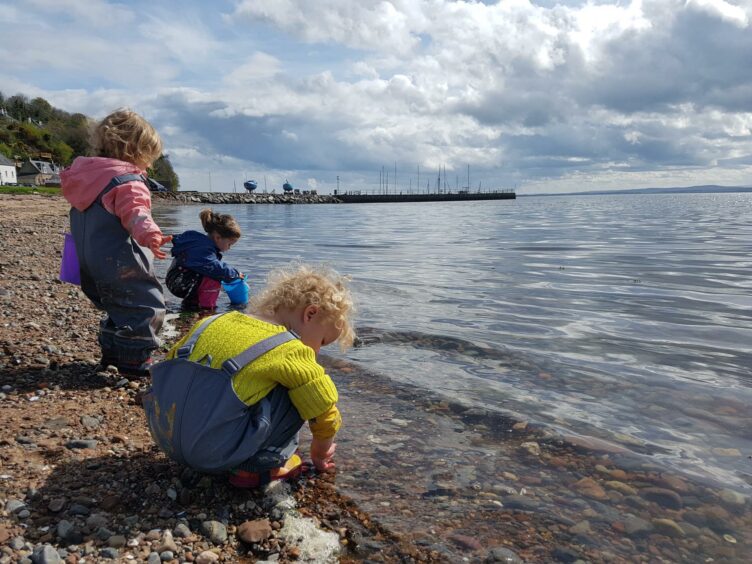The Scottish Childminding Association is targeting remote areas in the Highlands and Islands as part of a national recruitment campaign.
The SCMA chief executive said that remote and rural areas in the north face tougher challenges accessing childcare and are in danger of falling further behind.
The Scottish Rural Childminding Partnership will target 10 specific areas of Scotland, including over 20 communities in Argyll & Bute, Highland, Moray, Orkney, Shetland and the Western Isles.
The pilot programme aims to establish 900 childcare spaces by recruiting and supporting 100 new childminders.
What areas will the campaign target?
The SCMA met with the Care Inspectorate and Local Authorities last November to outline the targets for the recruitment drive.
They identified target regions by looking for communities with few or no childminders and will focus on a few key areas in each:
- Argyll & Bute: Cowal area, Kintyre peninsula, especially Campbelltown, Mull, Tobermory and Bute
- Moray: Buckie, Milnes & Speyside
- Orkney: recruitment already in process
- Western Isles: Barra, South Uist, North Uist, Benbecula, West of Lewis from Dalmore to Achmor
- Highland: Ullapool, Tongue, Helmsdale, Kinlochleven, South Lochaber, Kinlochbervie, Ardersier, Black Isle & Seaboard Villages, West Lochaber
- Shetland: All areas considered, particularly Unst, Yell and Whalsay, West of Shetland mainland
Why the recruitment drive?
Graeme McAlister, SCMA chief executive, said that the goal of the recruitment campaign is to help parents who are ‘desperately’ looking for childcare.
“The childminding workforce has been declining all across Scotland in every Local Authority area over the last five-to-eight years.
“In the last five years, the childminding workforce at the national level declined by 26%– that’s 1,457 childminders.”
And he said that remote and rural areas are hit hardest by the national decline. There is tension between small populations in need of childcare and the difficulty of sustaining new businesses in remote areas.
But it isn’t all doom and gloom, he said.
“There are opportunities in remote and rural areas because it’s feasible to establish smaller childminding businesses in very remote and rural parts, where it may not be viable to establish a larger childcare setting with staff and other needs.
“From our point of view, it is fundamentally important these businesses get established and become sustainable.”
Risk of the gap growing wider
The Scottish Government recently expanded childcare funding, raising families’ entitlement to 1,140 free hours of childcare every year.
Children ages three and four are eligible, as well as some eligible two-year-olds. This means that demand for childcare is increasing, with more children eligible for more hours.
But parents who live in rural and remote areas are already struggling to get the childcare they need. And just because parents are entitled to more childcare, it doesn’t mean it’s any easier to get.
Mr McAlister said that part of the Scottish Rural Childminding Partnership mission is making sure things don’t get worse for rural families.
“What we are concerned about is that there’s already a lot of inequalities for remote families in terms of travel costs and difficulty of access.
“There’s a risk that the gap is going to widen if parents in rural areas are not able to access funded entitlement.”
Who can apply for the Scottish Rural Childminding Partnership
Despite a common misconception, you can start a childminding career without a childcare background.
Just ask Zoe-Elizabeth Thwaite, a professional childminder in Avoch. She left a career in retail to start her own childminding business, after seeing how difficult it was to find childcare in her area.
“I live right on the beach and in such a beautiful village but I couldn’t enjoy any of it because I was working such long hours in retail.
“I loved being a mum and saw that professional childminding could enable me to be there for my daughter, while earning an income.
“Becoming a childminder is one of the best things I’ve ever done.”
The pilot will initially look to recruit 100 new childminders. Successful applicants will receive a £750 start-up grant, induction training and ongoing support.
The £170,000 partnership is funded by South of Scotland Enterprise, Highlands and Islands Enterprise and Skills Development Scotland. You can learn more about how to apply on the SCMA website.
Read more from the Schools & Family team
Do-Re-Mi: Success for first in-person musical at Aberdeen school in two years
Aberdeenshire teacher struck off following incidents with pupils
Alness Academy rallies round therapy dog Bru following cancer diagnosis

